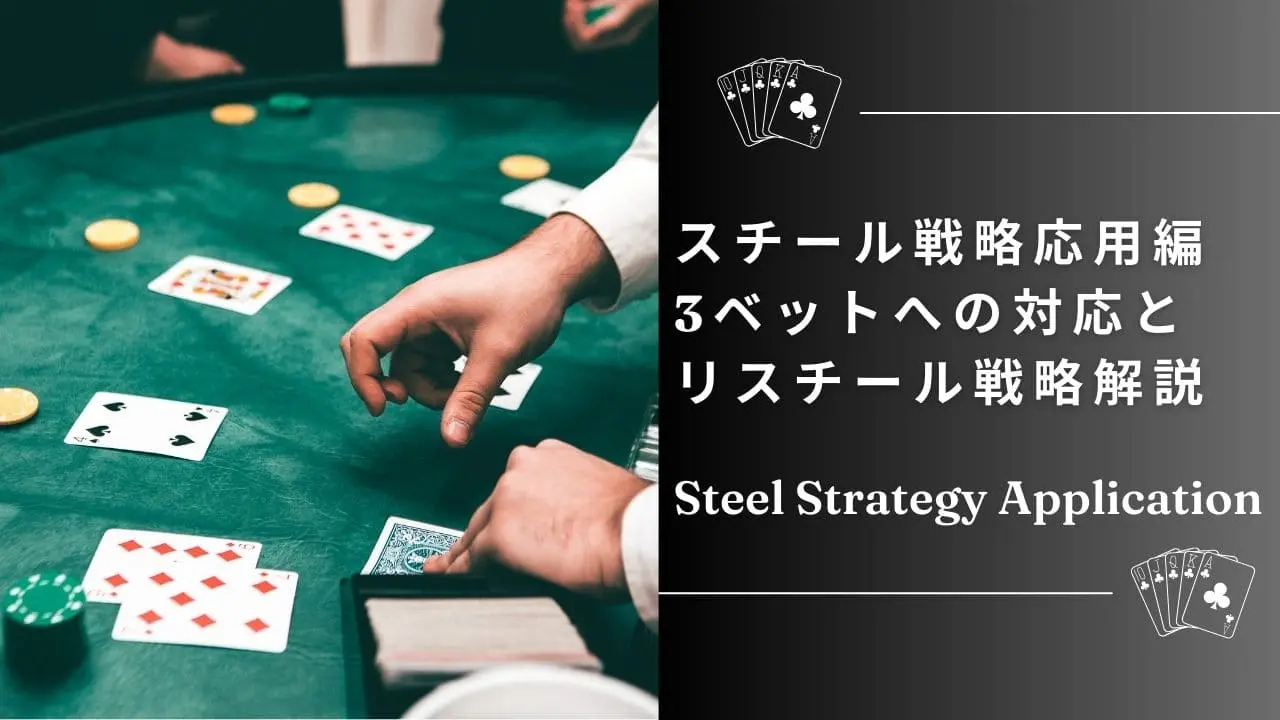In tournament poker, the steal strategy is one of the most efficient ways to accumulate chips. However, simply open-raising from late positions to grab blinds isn’t always enough—opponents can and will fight back, especially with 3-bets.
Misplaying against a 3-bet can lead to significant losses. Conversely, incorporating the concept of the “resteal”—a 3-bet bluff against a steal—adds a powerful weapon to your arsenal. This article dives into the advanced tactics needed to counter 3-bets and employ resteals effectively, helping you level up your steal game and stay ahead of aggressive opponents.
The Dynamic Between Steals and 3-Bets
What Is a Steal?
A steal is an open raise made from late position (typically the Cutoff or Button) after everyone else has folded, aiming to win the blinds uncontested. When executed with the right frequency, it’s a low-risk chip gain. However, if you steal too often, observant players will catch on and counter with 3-bets.
What Is a 3-Bet?
A 3-bet is a re-raise after an initial raise. In the context of steal situations, it’s often used as a counter-strategy by players in the blinds or on the Button. These players aim to exploit your perceived wide steal range by applying pressure before the flop.
3 Key Strategies for Responding to 3-Bets
1. Fold — The Safest Option
Most hands in a standard steal range aren’t strong enough to continue after a 3-bet. Folding is the most prudent response, especially in the following cases:
- Opponent has a low 3-bet frequency (stronger range)
- You’re out of position
- Opponent has a deep stack (making 4-bet bluffing risky)
2. Call and Play Post-Flop
If your hand is decent (e.g., ATs, KQs, 99), calling the 3-bet can be viable—particularly if you’re in position. However, this route demands solid post-flop skills, especially in reading board textures and your opponent’s continuation betting tendencies.
3. 4-Bet Bluff — Turn the Tables
When you suspect the opponent’s 3-bet is light (i.e., a resteal), a 4-bet bluff can be a powerful response. This play is high risk and high reward, and should only be made after considering factors such as:
- Opponent’s 3-bet frequency and fold-to-4-bet stats
- Your position
- Stack depths
- Hand strength
What Is a Resteal?
A resteal is a 3-bet against a player who is likely stealing. It’s essentially fighting fire with fire—responding to a light raise with a light re-raise. When executed correctly, it can yield excellent expected value (EV) by forcing steals to fold and reclaiming initiative.
When to Resteal
Resteals work best under the following conditions:
| Situation | Explanation |
| Opponent frequently steals from CO/BTN | Punish players who raise too often from late position. |
| Opponent folds often to 3-bets | High fold-to-3-bet % = profitable bluff resteals. |
| You’re in the SB or BB | Ideal spots to resteal against late-position openers. |
Example Resteal Range
Use hands that balance bluff potential with post-flop playability:
- Suited Broadways: A5s, KTs, QJs
- Medium Pairs: 66–99
- Offsuit Broadways: AJo, KQo
These hands are strong enough to proceed if called, but not so strong that you’d always flat-call preflop.
Summary: Mastering Advanced Steal Tactics
Stealing blinds isn’t just about pressing buttons—it’s about playing the metagame. You must read your opponents’ tendencies, stack sizes, and positions to determine the best response.
Key takeaways:
- Know when to fold, call, or 4-bet after facing a 3-bet.
- Restealing can reverse the pressure if your opponent oversteals or folds often to 3-bets.
- Use position to your advantage—resteals are most effective from the SB and BB.
- Choose your hands wisely, focusing on semi-bluff ranges that balance fold equity and post-flop strength.
By mastering these advanced techniques, you’ll graduate from a basic “steal player” to a true strategic force at the poker table.


